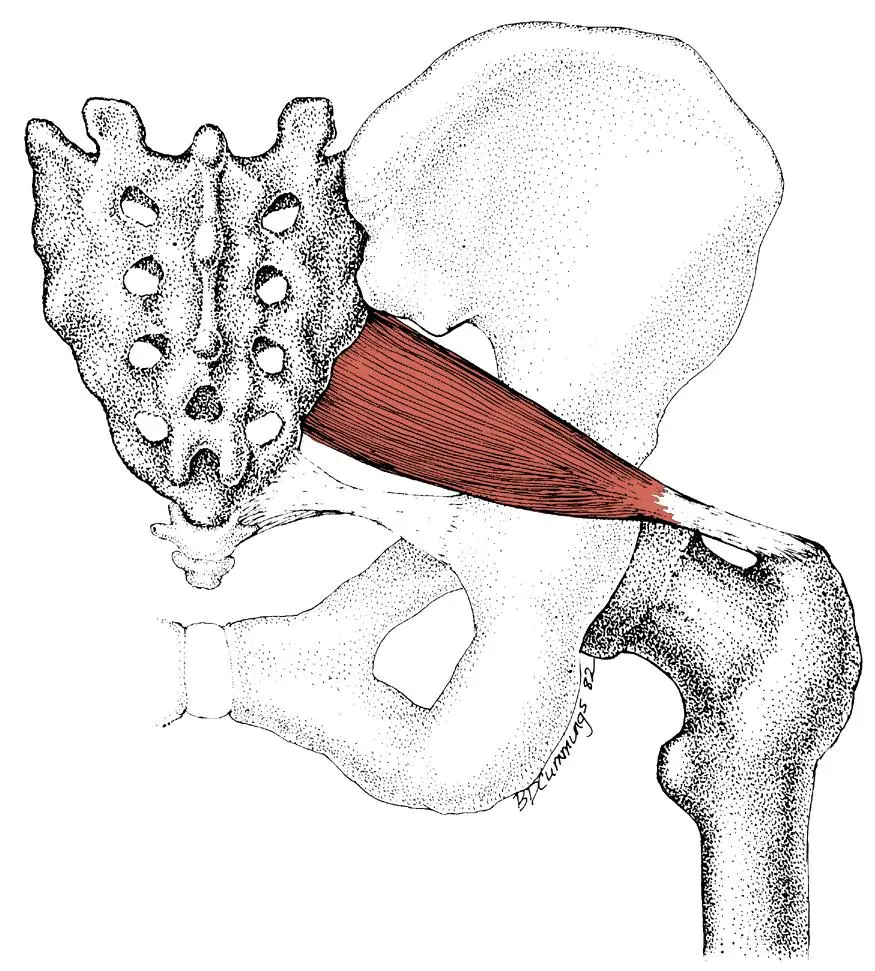This muscle is important for walking and can often be the culprit for low back and leg pain.
What They Do
The piriformis muscles help move your leg in a few different ways. First, it helps twist your thigh outward while bringing your leg back; it also helps bring your thigh into the midline while your leg moves forward.
Why They Hurt
- They may be too tight
- You might have a knot or spasm
- You may sit too much during the day or sustained an injury like falling on your buttock region
- There may be joint dysfunction (restriction in spine)
Related Problems
If you have a problem with your piriformis, you may also experience:
Low back or Leg Pain, due to
- Trigger points - see diagram below
- or, pinching of the nerve that passes under or through the piriformis (this is a normal anatomical variation - see piriformis syndrome)
The trigger points (the ‘X’ icons) can cause pain in the colored areas.
What to Do (Treatments)
Depending on which of the above causes you may have, you can:
- Stretch (see below)
- Have your knots treated
- Have your low back, pelvis and hips adjusted (as applies to you)
How to: Stretch
- Sit near the edge of a sturdy chair, keeping your knees bend and feet flat on the floor ahead of you.
- Raise your one ankle on the opposite knee while keeping your back in 'neutral spine'.
- Gently lean forward

- Starting on all fours, bring one ankle ahead of the opposite knee.
- Slowly bring hips back until you feel a stretch in the buttock region.

- Lie on your back keeping 'neutral spine.'
- Place one ankle across the opposite knee.
- Bend the bottom knee and with your hands behind the knee, gently and slowly bring it toward your chest.



